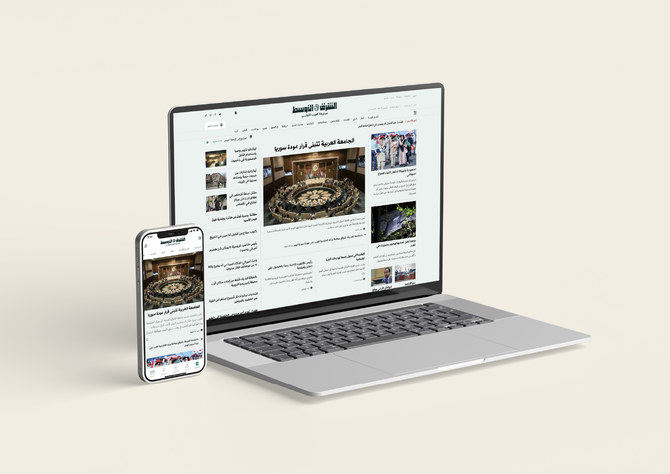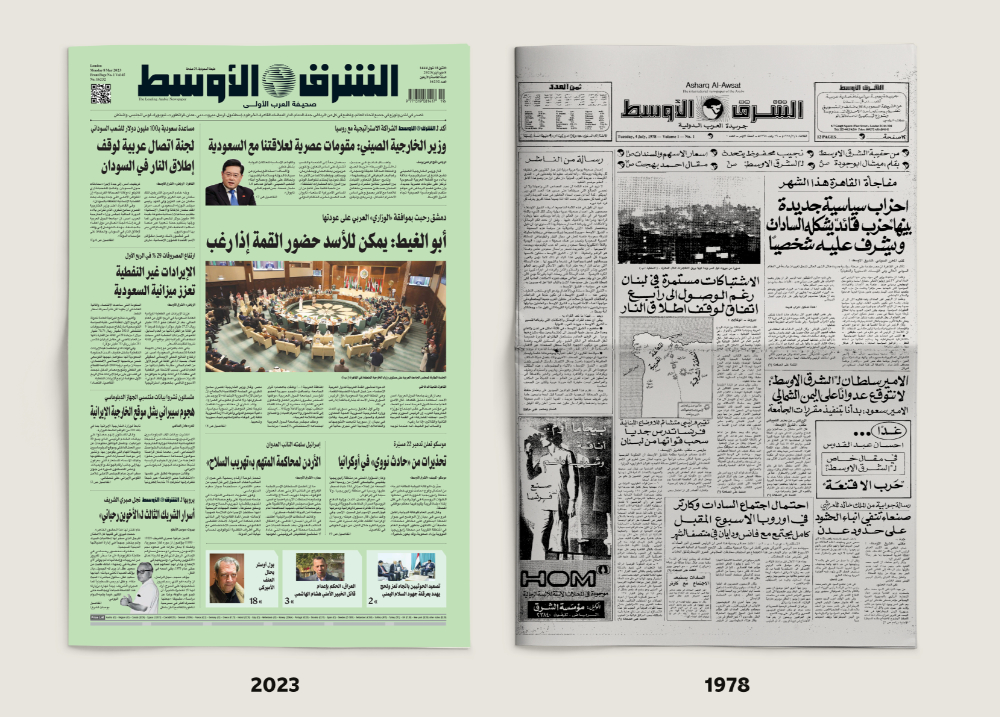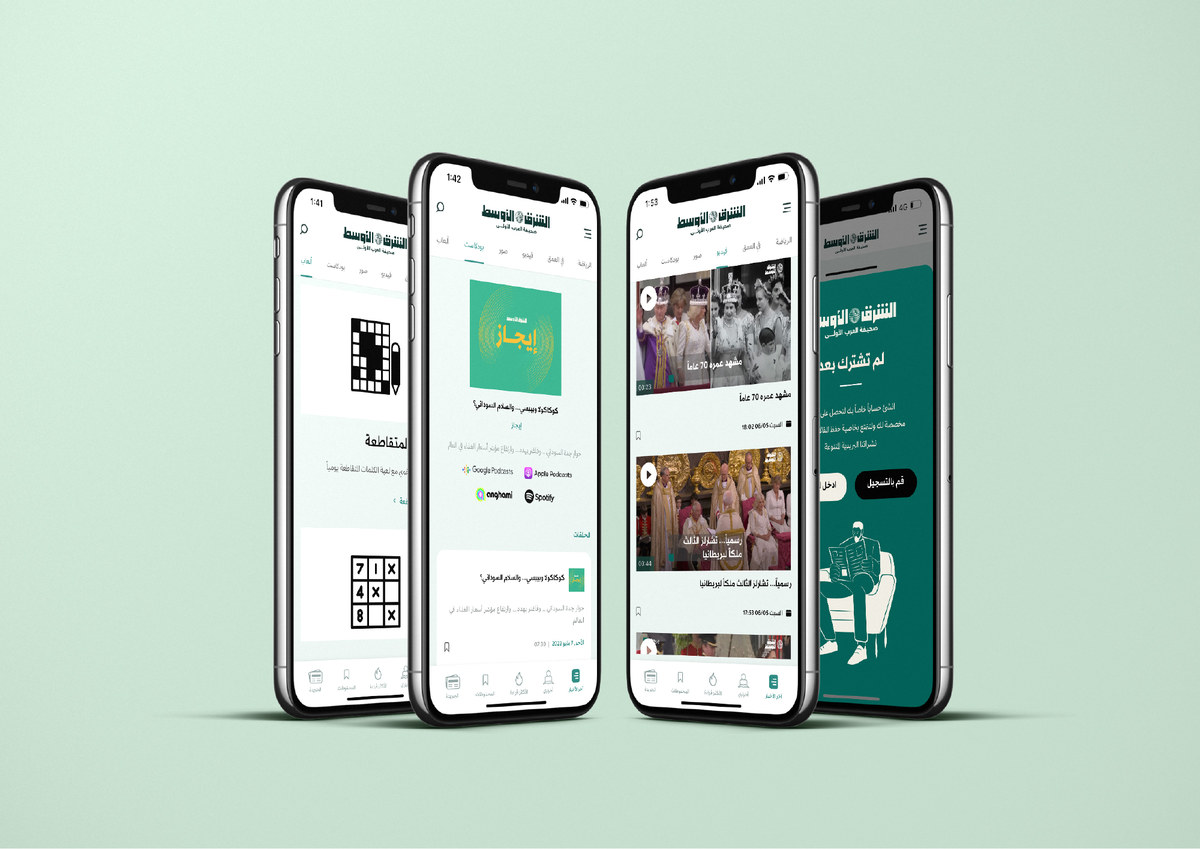
- ARAB NEWS
- 04 Jul 2025

“Better late than never” is what could be said about the much-anticipated digital makeover our London-based sister publication, Asharq Al-Awsat, has finally received.
Yet, this huge investment by our owning group, SRMG, should come as no surprise — not just because the group took a strategic decision over the past two years to adopt digital transformation, but also because technology was never a stranger to Asharq Al-Awsat.
Established by legendary publishers Hisham and Mohammad Ali Hafez in 1978, Asharq Al-Awsat has carved itself a unique position among Arabic-language newspapers. Indeed, it has always been the International Herald Tribune of the Arab world — a must-read for movers and shakers at home and a loyal companion of Arab business travelers, almost anywhere they went in the world.
In the 1980s, Asharq Al-Awsat became the first newspaper in the world to print via satellite in four continents. This was a real breakthrough in the world of publishing. Even the Japanese — the world’s masters in terms of technology at the time — came to London to see this Saudi marvel.
And it was thanks to that investment in innovation that the paper gained its first advertising slogan of “Seventy percent of the globe is covered by water, the rest is covered by Asharq Al-Awsat.”

Then, as the mostly unionized British press industry under Margaret Thatcher resisted technological change and resorted to strikes; Asharq Al-Awsat was among the first newspapers in either the UK or the Arab world to introduce desktop publishing. Suddenly, Apple Macs replaced pen, paper and typewriters, allowing Arab journalists to use cutting-edge technology long before many of their counterparts.
In the early 2000s, Asharq Al-Awsat also led Arab newspapers in going full color (which until then was a privilege restricted to magazines) with a massive advertising campaign titled “All the difference lies in colors.” The advert teaser showed a soldier in black and white, and then the colored reveal showed him to be a UN peacekeeper.
Apart from coming from a family that religiously read Asharq Al-Awsat since — literally — as far as I can remember, I had the privilege of working with the paper in its London headquarters from 2004 to 2009. As the founding editor of its weekly media section, I was lucky enough to document through my reporting some significant changes that continue to impact the entire publishing world to this day — the introduction of broadband, the rise of smartphones and the invention of social media.
Credit goes to SRMG management, but technology was never a stranger to Asharq Al-Awsat.
Faisal J. Abbas
Sadly, shortly after I left and embarked on my own transformative journey (where I found myself turning to write in English for The Huffington Post, a web-only platform), Asharq Al-Awsat — for various reasons — didn’t fully go through its complete digital transformation.
As the traditional print market continued to decline, and as digital competitors continued to mushroom, it was almost as if this “green giant” of integrity, professionalism and insight had fallen short of achieving its full potential digitally.
As such, credit goes to the current SRMG senior management for prioritizing the awakening of this giant by empowering its current editor-in-chief, veteran journalist Ghassan Charbel (a giant in his own right), to make the changes announced on Sunday.
Charbel has definitely refined the content of Asharq Al-Awsat and injected new blood into it since he took over six years ago. But a redesign and a new digital operation can’t be done without a major investment and conviction that it is what is needed to ensure content gets to consumers, who are increasingly on the go and decreasingly able to focus.
Of course, the reason I focus in this column on design and technology is because the paper’s editorial integrity speaks for itself. Despite blips along the way, like any other newspaper, there is nobody that can deny the sheer number of world exclusives, daring reporting and insightful opinion pieces Asharq Al-Awsat has generated over the past 45 years.

As well as current editor Ghassan, the paper has produced two living legends of Saudi/Arab journalism: Othman Al-Omeir (who established the first ever Arabic electronic newspaper, Elaph, in 2001) and Abdulrahman Al-Rashed (who went on to successfully manage Al Arabiya News Channel for 10 years).
In addition, Asharq Al-Awsat has produced two Saudi media ministers: Dr. Adel Al-Toraifi (2015-2017) and current minister Salman Al-Dossary. Not to mention a large number of authors, TV anchors and editors of other leading newspapers and publications in the region.
At a time when we are bombarded by all sorts of content, some real, some fake; and a time when bias has become normalized — we need quality Arabic journalism more than ever.
This is even more important when we remember that we also live at a time when only 1.1 percent of the top 10 million websites use Arabic despite the fact it is spoken by 3.5 percent of the world’s population.
Asharq Al-Awsat has always delivered quality in print, and it is time it did so online as well!
• Faisal J. Abbas is the editor in chief of Arab News.
Twitter: @FaisalJAbbas